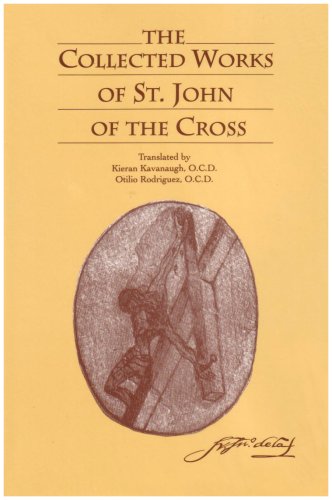Right Effort, Right Mindfulness, and Right Mediation/Concentration make up the meditative portion of the Eightfold Noble Path.
Right Effort
Bodhi defines Right Effort as "the energy in wholesome states of consciousness directed to liberation from suffering."
He elaborates more fully:
"Time and again the Buddha has stressed the need for effort, for diligence, exertion, and unflagging perseverance. The reason why effort is so crucial is that each person has to work out his or her own deliverance. The Buddha does what he can by pointing out the path to liberation; the rest involves putting the path into practice, a task that demands energy. This energy is to be applied to the cultivation of the mind, which forms the focus of the entire path. The starting point is the defiled mind, afflicted and deluded; the goal is the liberated mind, purified and illuminated by wisdom. What comes in between is the unremitting effort to transform the defiled mind into the liberated mind."
Specifically, effort is supposed to be directed:
1. to prevent the arising of unarisen unwholesome states
2. to abandon unwholesome states that have already arisen
3. to arouse wholesome states that have not yet arisen
4. to maintain and perfect wholesome states already arisen
Right Effort is the energy, drive, and perseverance expended toward these ends.
Right Mindfulness
Right Mindfulness is the cultivation of a specific faculty of mind referred to as sati in Buddhist texts. This faculty is our ability to be fully aware of the "pure data" of the present moment, without getting lost in our mental constructs and interpretation of the present moment. Bodhi calls this state of mind "bare awareness":
"What brings the field of experience into focus and makes it accessible to insight is a mental faculty called in Pāli sati, usually translated as 'mindfulness.' Mindfulness is presence of mind, attentiveness or awareness. Yet the kind of awareness involved in mindfulness differs profoundly from the kind of awareness at work in our usual mode of consciousness. All consciousness involves awareness in the sense of a knowing or experiencing of an object. But with the practice of mindfulness awareness is applied at a special pitch. The mind is deliberately kept at the level of bare attention, a detached observation of what is happening within us and around us in the present moment. In the practice of right mindfulness the mind is trained to remain in the present, open, quiet, and alert, contemplating the present event. All judgements and interpretations have to be suspended, or if they occur, just registered and dropped. The task is simply to note whatever comes up just as it is occurring, riding the changes of events in the way a surfer rides the waves on the sea. The whole process is a way of coming back into the present, of standing in the here and now without slipping away, without getting swept away by the tides of distracting thoughts.
It might be assumed that we are always aware of the present, but this is a mirage. Only seldom do we become aware of the present in the precise way required by the practice of mindfulness. In ordinary consciousness the mind begins a cognitive process with some impression given in the present, but it does not stay with it. Instead it uses the immediate impression as a springboard for building blocks of mental constructs which remove it from the sheer facticity of the datum. The cognitive process is generally interpretative. The mind perceives its object free from conceptualization only briefly. Then, immediately after grasping the initial impression, it launches on a course of ideation by which it seeks to interpret the object to itself, to make it intelligible in terms of its own categories and assumptions. To bring this about the mind posits concepts, joins the concepts into constructs—sets of mutually corroborative concepts—then weaves the constructs together into complex interpretative schemes. In the end the original direct experience has been overrun by ideation and the presented object appears only dimly through dense layers of ideas and views, like the moon through a layer of clouds."
Traditionally Vipassana, Insight, or "Mindfulness" meditation, which helps a practitioner become aware of this bare data, is also seen as leading to the direct experience of the three "marks of existence":
1. Dukkha: Suffering, unsatisfactoriness
2. Anicca: Impermanence
3. Anatta: "No-self," egolessness, the non-personal nature of reality
Bodhi also discusses the four foundations of mindfulness: awareness of the body, feelings, states of mind, and phenomena. The practice of mindfulness is most fully addressed in the Satipatthana Sutta.
Right Concentration
Right Concentration or Right Meditation involves focusing the mind on a suitable object until one achieves "one-pointedness," or unification of mind. Through Jhana meditation, a practitioner becomes one-pointed on an object and moves through the jhanas, or "meditative absorptions." According to the Pali texts, the Buddha taught eight jhana stages, each stage having its own mix of "jhana factors," or states of mind. Jhana meditation culminates in the four immaterial jhanas where a meditator changes the object of concentration to:
Fifth Jhana: The base of boundless space.
Sixth Jhana: The base of boundless consciousness.
Seventh Jhana: The base of nothingness.
Eighth Jhana: The base of neither perception nor non-perception.
Of these stages, Bodhi remarks:
"These states represent levels of concentration so subtle and remote as to elude clear verbal explanation. The last of the four stands at the apex of mental concentration; it is the absolute, maximum degree of unification possible for consciousness."
According to Bodhi, achieving the final jhana is not equivalent to Enlightenment, the end of the path. Instead, if all eight parts of the Path are perfected, when an aspirant directs their mind toward "the development of wisdom," they can "see Reality as it is," or experientially know the Four Noble Truths. It is through the attainment of this experiential knowledge that one may become an Arahat, an Enlightened One, a Buddha.












